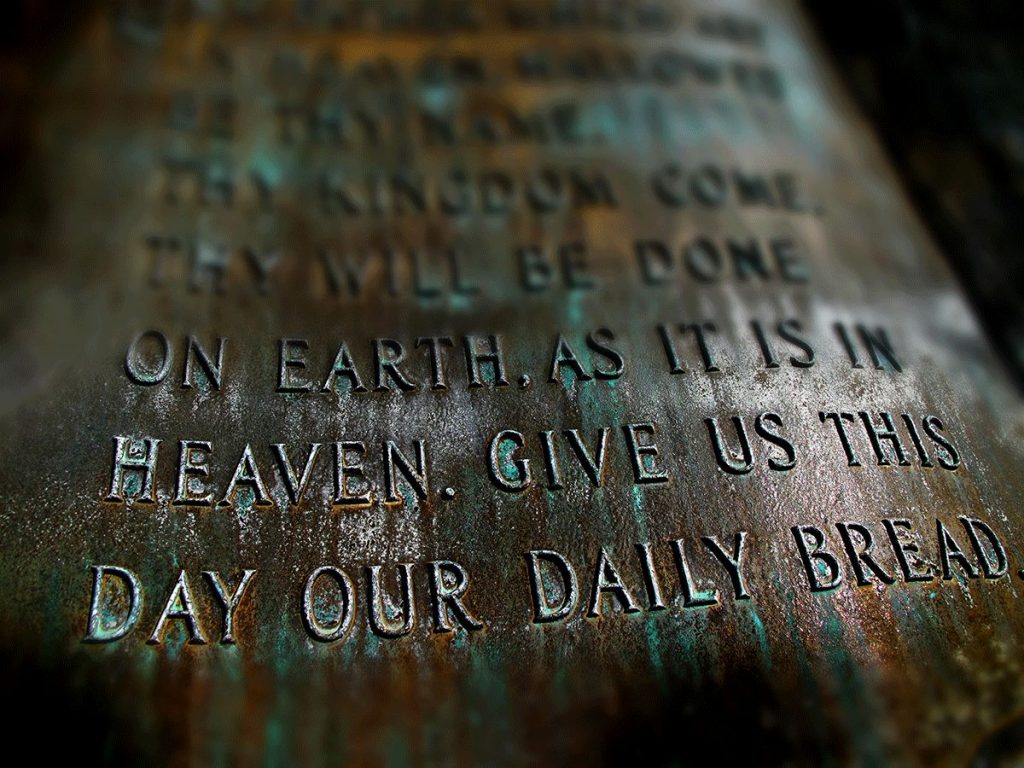We are still living in the beautiful and joyful light of Easter! And I want to return in my column to the theme of prayer that I introduced during Lent.
As you recall, we spoke in those columns about the necessity and simplicity of prayer and introduced two of my favorite ways of prayer — lectio divina and the Jesus Prayer.
In these coming columns, I want to talk about the prayer that Jesus gave us, the Lord’s Prayer.
In St. Luke’s Gospel, Jesus gives us this prayer after his disciples come to him and ask, “Lord, teach us to pray.” This really is a beautiful moment in the Gospels. In every age, even in our own, we can still turn to Jesus and ask him to show us how to pray.
Jesus prayed. This is the constant testimony of the Gospels. He prayed early in the morning and late into the night. He prayed before making decisions — like before he chose his Apostles. He prayed before carrying out his works of healing and forgiveness.
We went off to pray alone and he went to the mountain to pray with his disciples. He prayed in times of joy and when he was in agony. He prayed on his knees and with his face on the ground. He offered prayers of thanksgiving, petition and praise.
Jesus is our model for prayer and he shows us what it looks like to pray as a child of God.
It is interesting to me that in St. Matthew’s Gospel, Jesus gives us the Lord’s Prayer near the end of his Sermon on the Mount.
The Sermon, beginning with the Beatitudes, gives us the picture of what it means to be a Christian, and how we should live as a child of God. So it is fitting that here he teaches us to pray — because prayer is the language of our relationship with our Father.
The Lord’s Prayer has been called the perfect prayer and the summary of the whole Gospel.
In a way, we could say that this prayer gives us the “spirituality” of Jesus at prayer. When we pray the Our Father, we are praying as Jesus did — as a child of God, with love and confidence; with the desire to be obedient and to serve our Father’s will.
For me, it is amazing to reflect that the words we pray today were once spoken on the lips of our Lord, although obviously he prayed them in his own language.
Jesus gives us his own words to pray with — but far more than that. He gives us the gift of his own intimate prayer to God. When we pray these words we are praying with Jesus. We are standing alongside him as his brothers and sisters, sharing in his own personal prayer of self-offering to the Father.
We need to remember that when we pray. The Lord’s Prayer is not something we should say automatically or casually. Jesus is inviting us to enter into his own prayer. We need to have his point of view, to lift our eyes to the Father as he did.
The first word of the prayer is “our.” Although our prayer is personal, Jesus wants us to know we are never alone when we pray. He is not my Father, he is our Father. Our prayer is never solitary.
We go with Jesus, but we are not following Jesus alone. We believe in the company of others who believe. When we pray to our Father we are bringing to him not only our individual needs and hopes — but also the needs and hopes of our brothers and sisters.
And we pray not only for those of us who are Catholic or Christians. When we pray, we pray as representatives of the whole human family — the “our” of this prayer includes even those who are still far from God.
We pray with the love that Jesus had for every person and for all those he gave his life for on the Cross. We are praying for God’s will to be done — and we know that God wills everyone to be saved and come to know his mercy and love.
There is a line in the Catechism that should touch our hearts as we pray: “God’s love has no bounds, neither should our prayer. Praying ‘our’ Father opens to us the dimensions of his love revealed in Christ: praying with and for all who do not yet know him, so that Christ may ‘gather into one the children of God.’”
So let us pray for one another this week — pray for our brothers and sisters everywhere and for peace in our troubled world.
And let us ask our Blessed Mother Mary to teach us to really live the prayer that her Son taught us to pray.
You can follow Archbishop Gomez daily via Facebook, Twitter and Instagram.

